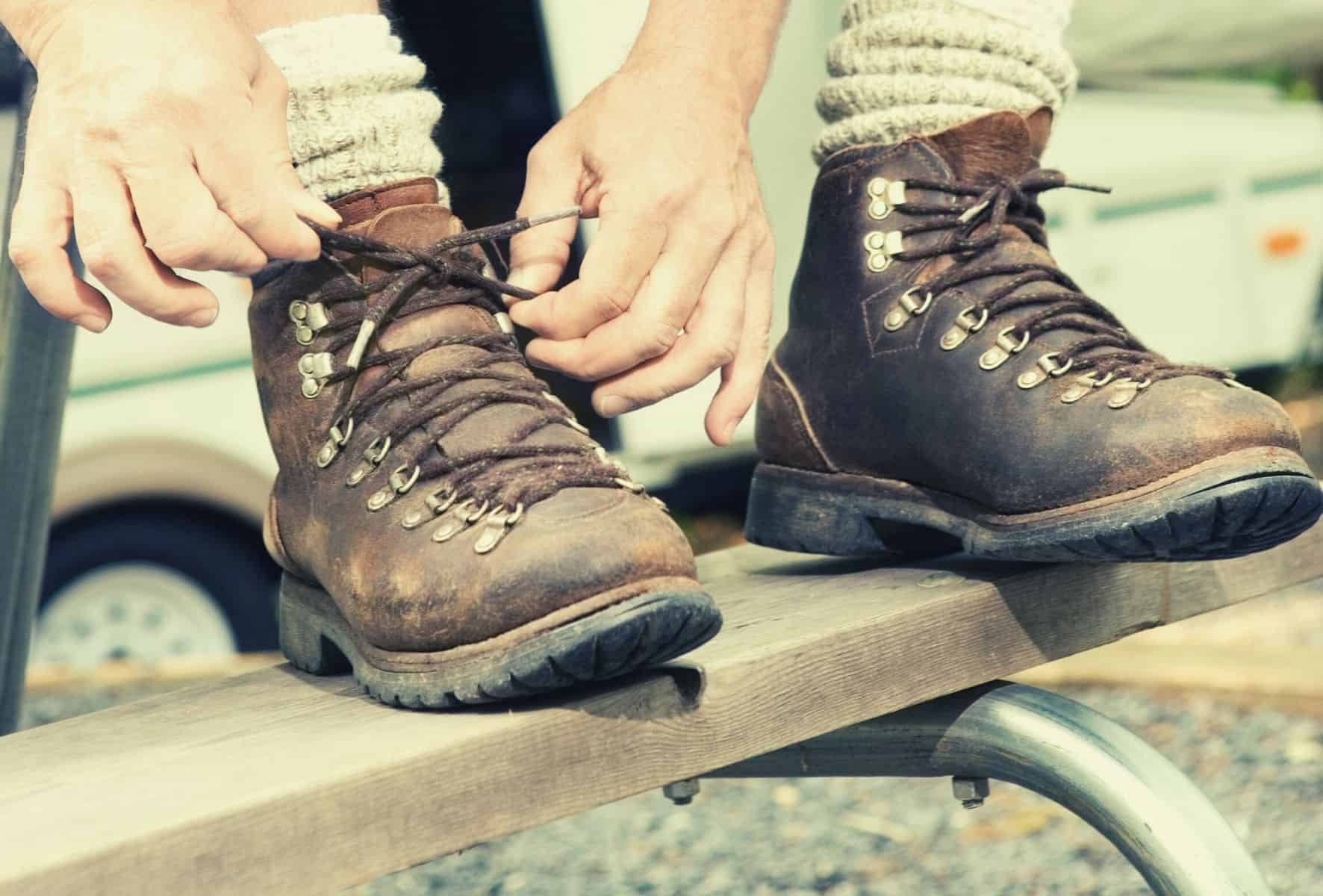Hiking footwear comes in an almost mindboggling variety of forms, from low-cut, lightweight, hiking boots right through to beefy mountaineering models.
However, one thing that holds for every type of boot is that an ill-fitting hiking boot is about the surest way there is to turn your time on the trails into a true suffer-fest.
So, how are we to find the perfect hiking boots or shoes for backpacking or hiking? Read on for our seven top tips on matchmaking your feet to their ideal hiking boot partner.
Table of Contents
1. Know your feet
Before you head to the store to try hiking or mountaineering boots, we recommend having a good idea of your feet’ quirks and peculiarities beforehand.
If you have particularly flat feet, high arches, wide feet, bunions, or any other atypical features, passing this info on to the store assistant will help narrow down the options and save you a lot of trial and error before finding the right pair.
2. How Should Hiking Boots Fit: Come prepared
When you go to the store to try on hiking boots, a little bit of foresight can go a long way toward helping you find the perfect hiking boot fit.
When it comes to hiking boot sizing, make sure to wear the type of socks you would wear when out on a hike. If you happen to buy a new pair of boots that fit your feet perfectly in thin daywear socks, they might be on the pinchy side when worn with thicker hiking socks when your feet are swollen after a day on the trails.
To minimize the risk of buying too small, do your shopping later in the day when your feet will be at their largest. Feet swell throughout the day and can be much more voluminous in the pm compared to the am.
3. How Tight Should Hiking Boots Be: Do the finger test
This little trick lets you know very quickly if you’re wide of the mark with your sizing. Remember, too tight (or loose) boots will quickly turn pressure points into hot spots after a few hours of walking around.
Before tying the laces on the boot, place your foot flat on the floor and slip your index finger into the leather boots heel along the length of your Achilles heel. With the right fit, you should be able to push your finger down the boot without force.
If you have to force the finger inside, then the boot is likely too small; if you can insert it without making contact with the boot’s back, then the boot is too big.
4. Snug, not tight
Next up, get the laces tied to test how your foot fits inside the boot in terms of length and volume.
The ideal scenario is to have the laces tied tightly but not restrictively.
Once tied, a bulging tongue and laces will tell you the boot is on the small side.
If you have to tie the laces too tightly and the eyelets on each side are being yanked together across the tongue, the boot is probably too big.
Likewise, if the boots are laced firmly but you still feel space above your toes and forefoot, and you can easily wiggle your toes then it is too roomy for the volume of your foot.
5. Take a stroll
Make sure to spend some time in the boots to get a feel for how comfortable they are when you walk around.
Load up a pack, have a good stroll around the store, and get up and down a staircase or two if possible.
Also, try to Shift your weight around as you walk to check the width and internal support. The ideal fit should feel secure but also comfortable and not excessively restrictive.
Bear in mind that a new hiking shoe will not be broken in, so feeling a few pinches here and there is perfectly normal. If your toes are now touching the ends of you the boots, however, then you should try going either a full or half size up.
6. Focus on the flex point
The flex point is located on top of your foot just behind the base of your toes, or above the ball of the foot.
This area is subjected to more movement – and, hence, pressure and strain – than almost any other part of the hiking boot. It gives us an idea very quickly of whether a boot’s width is suitable for our feet.
If the flex point is excessively creased, the backpacking boots are probably too broad or big. If the material puts pressure on your foot or pinches when flexed, then the boots might be too narrow.
7. Be wary when buying online
When shopping online, the best way to avoid a lot of trial and error is to buy from a brand you’ve worn before.
Most manufacturers are apt to use very similar sizing across models and from one year to the next. As such, if you’ve found a brand that’s been a great fit in the past, at the end of the day the chances are it will be a good fit now, too…

